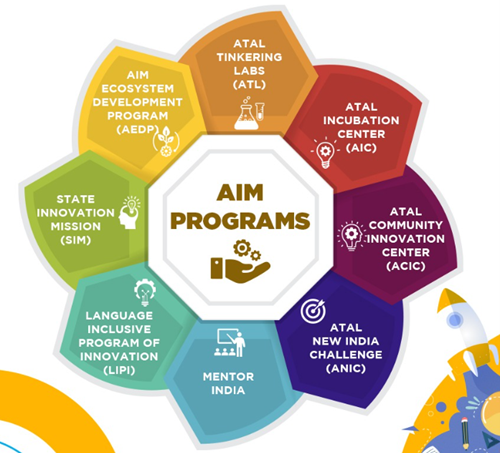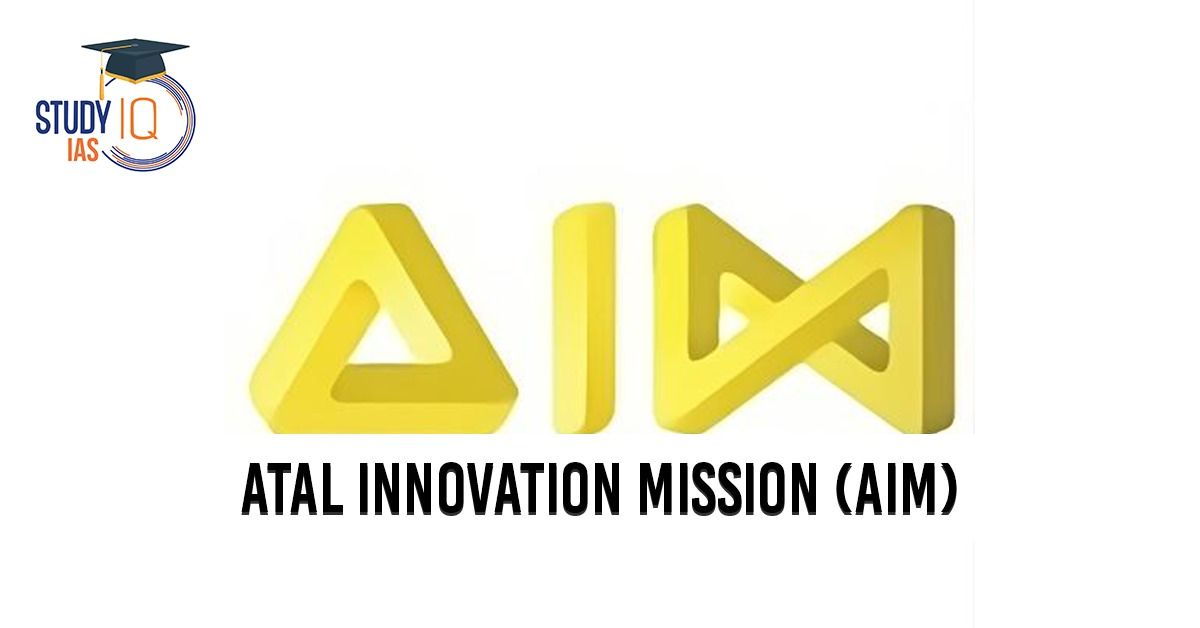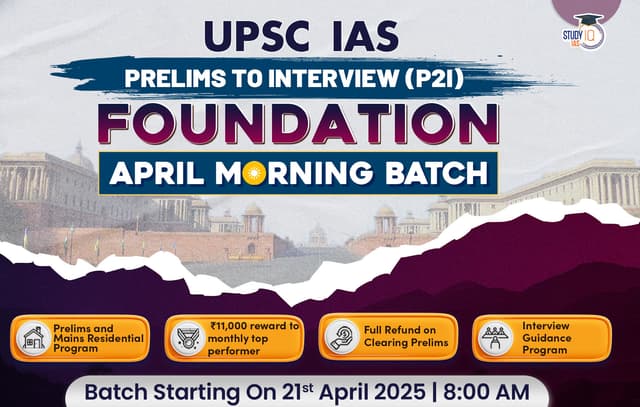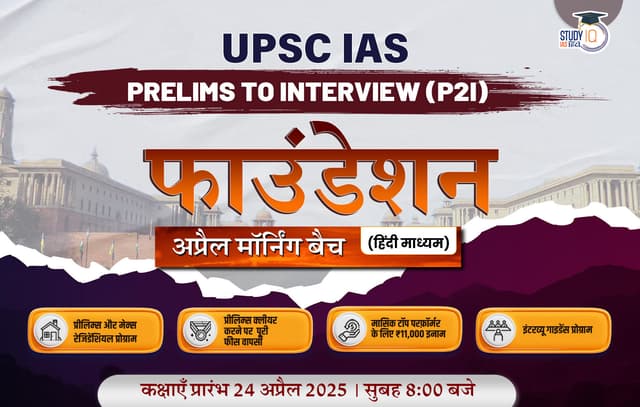Table of Contents
About Atal Innovation Mission (AIM)
- It is a flagship program of the Government launched under NITI Aayog in 2016.
- It aims to create and promote an ecosystem of innovation and entrepreneurship across the country at school, university, research institutions, MSME and industry levels.
Objectives of AIM
- Fostering a Culture of Innovation
- Encourage innovative thinking across all sectors of society, with a focus on problem-solving and design-thinking approaches.
- Promoting Entrepreneurship
- Support startups and entrepreneurs by providing resources, mentorship, and funding opportunities.
- Building Innovation Ecosystems
- Create a network of Atal Tinkering Labs (ATLs) and Atal Incubation Centres (AICs) to support budding innovators and businesses.
- Driving Economic Growth
- Leverage innovation to solve societal challenges, create jobs, and boost the Make in India initiative.
- Global Competitiveness
- Position India as a global leader in technological innovation and entrepreneurship.
Key Initiatives under AIM & AIM 2.0
- Atal Tinkering Labs (ATL):
- They are established in 10,000 schools across India for grades 6-12, to nurture curiosity and innovation using technologies like IoT, 3D printing, robotics etc.
- Atal Incubation Centres (AICs):
- Presently there are 72 centres actively supporting over 3,500 startups. They provide essential resources like mentorship, funding, and technical infrastructure to help startups grow and thrive.
- Atal Community Innovation Centres (ACICs):
- To encourage entrepreneurship in underserved regions by providing infrastructure and an environment for innovation.
- Language Inclusive Program of Innovation (LIPI):
- To build innovation and entrepreneurship ecosystems in India’s 22 scheduled languages for lowering the entry barrier confronting innovators, entrepreneurs and investors who don’t speak English.

Achievements of AIM
- Widespread Outreach: Established a robust innovation ecosystem, impacting millions of students and entrepreneurs.
- Startup Growth: Enabled the creation of numerous startups, contributing to India’s ranking as a global startup hub.
- Inclusivity: Bridged the gap between urban and rural innovation through initiatives like ACICs.
- Skill Development: Equipped students with critical 21st-century skills, including coding, robotics, and problem-solving.
- Global Recognition: Attracted partnerships with leading global organizations like the United Nations Development Programme (UNDP) and Bill & Melinda Gates Foundation.
Challenges in AIM Implementation
- Funding Constraints
- Limited financial resources hinder the expansion and sustainability of ATLs and AICs.
- Geographical Disparities
- Concentration of resources in urban areas leaves rural regions underserved.
- Skill Gaps
- Shortage of skilled mentors and trainers for students and startups.
- Awareness
- Lack of awareness among students, schools, and MSMEs about AIM initiatives and benefits.
Way Forward
- Increased Funding
- Allocate higher budgets to expand initiatives and ensure long-term sustainability.
- Rural Focus
- Prioritize rural and semi-urban areas to make innovation inclusive.
- Public-Private Partnerships (PPPs)
- Collaborate with private sector organizations for funding, mentorship, and technological support.
- Capacity Building
- Train more mentors and teachers to guide students and startups effectively.
- Awareness Campaigns
- Leverage digital platforms to spread awareness about AIM initiatives and benefits.
| UPSC PYQ |
| Q. Atal Innovation Mission is set up under the; (2019)
(a) Department of Science and Technology (b) Ministry of Labour and Employment (c) NITI Aayog (d) Ministry of Skill Development and Entrepreneurship Answer: C |


 Accredited Social Health Activists (ASHA...
Accredited Social Health Activists (ASHA...
 World’s 1st Unique Q-Shield Platform a...
World’s 1st Unique Q-Shield Platform a...
 New Phase of Operation Chakra to Combat ...
New Phase of Operation Chakra to Combat ...





















